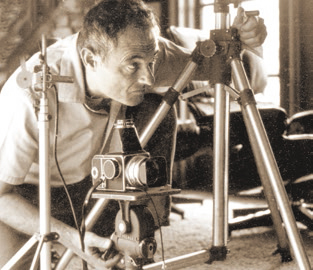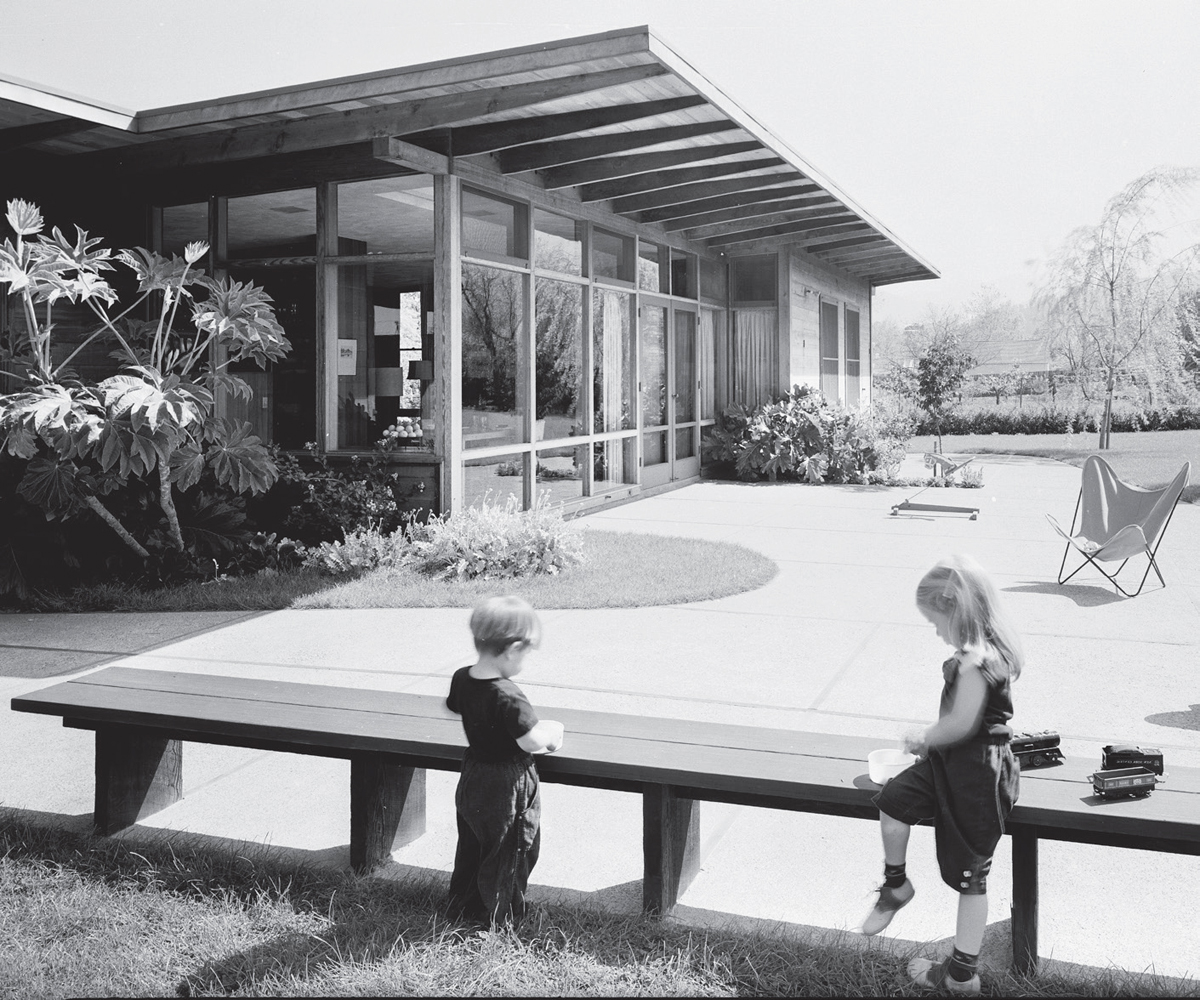Lords of the Lens - Page 6
 |
5. ERNIE BRAUN
There are few architectural photographers whose work is as immediately identifiable as that of Ernie Braun—or at least the work he did for tract builder Joe Eichler.
For one, the photos Braun (1921- 2010) produced for Eichler had a different purpose than the photos of most of his peers. Most architectural photographers worked directly for architects, whose aim was to burnish their own reputations and gain new clients.
Or they were produced for magazines, whose aims included spreading the word about contemporary architecture and attracting readers.
But Braun's photos for Eichler were intended to help the builder sell houses. They were aimed at the very people portrayed in Braun's photos: young families with kids who are shown romping in backyards, adults gathering at a table, Sunday artists at an easel in the atrium.
Braun's photos are as much movie stills of suburbia in action as they are architectural imagery. Braun loved including people in his photos, and in a 2008 interview he explained why many architects did not.
 |
|
|
"The stupid architects," he said, "didn't want people to spend all their time looking at pretty girls instead of their architecture."
Braun, a native of San Diego who served as chief photographer for Eichler from 1954 until 1968, took thousands of photos for hundreds of architectural and design clients, until focusing on a second career as a successful nature photographer.
His architectural clients included many of the big names in Northern California—Wurster, Bernardi & Emmons, Lawrence Halprin, and Roger Lee. His photos ran in national and regional magazines, and were regularly featured in Sunset for years.
And when he could, he included people in his non-Eichler architecture work. For one such shoot, Braun created a delightful homecoming scene in a color shot of a new home architect Jack Robbins designed for his family in 1957.
For one of those photos, we see a man—Robbins? A model?—arriving at the glass-walled, hillside structure, the city of Oakland glowing in the background. In the window a boy and girl stand in the window wall counting the seconds till their dad steps through the door.
Braun considered his photos a form of storytelling. "It's just like a message that you write," he said.




